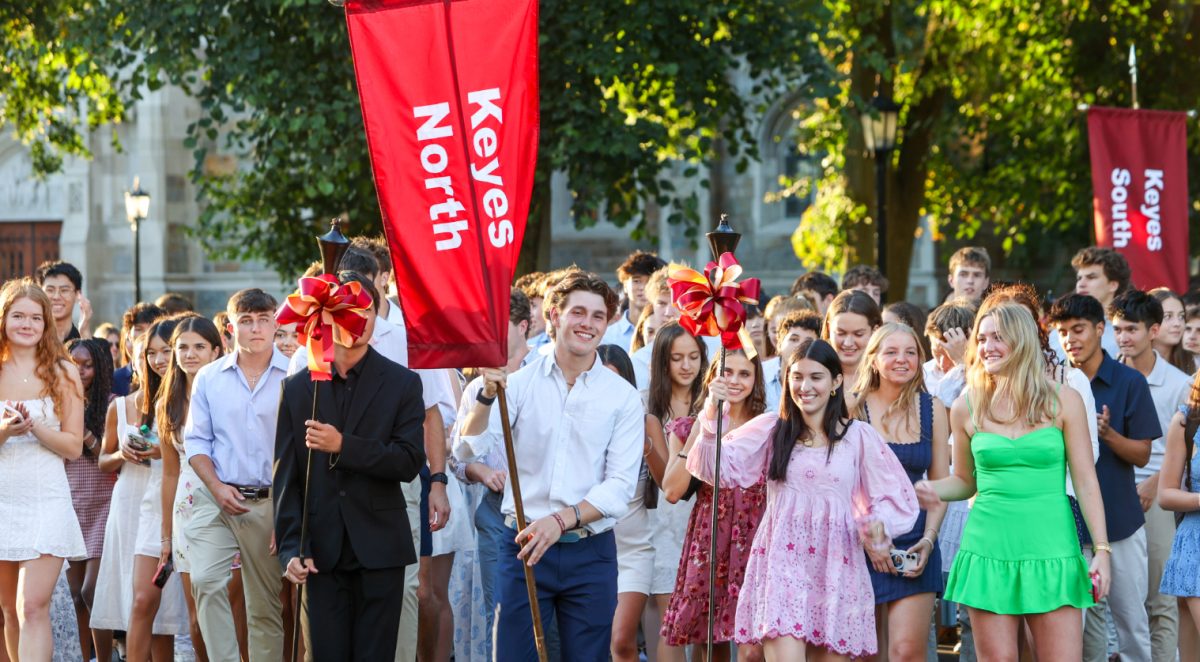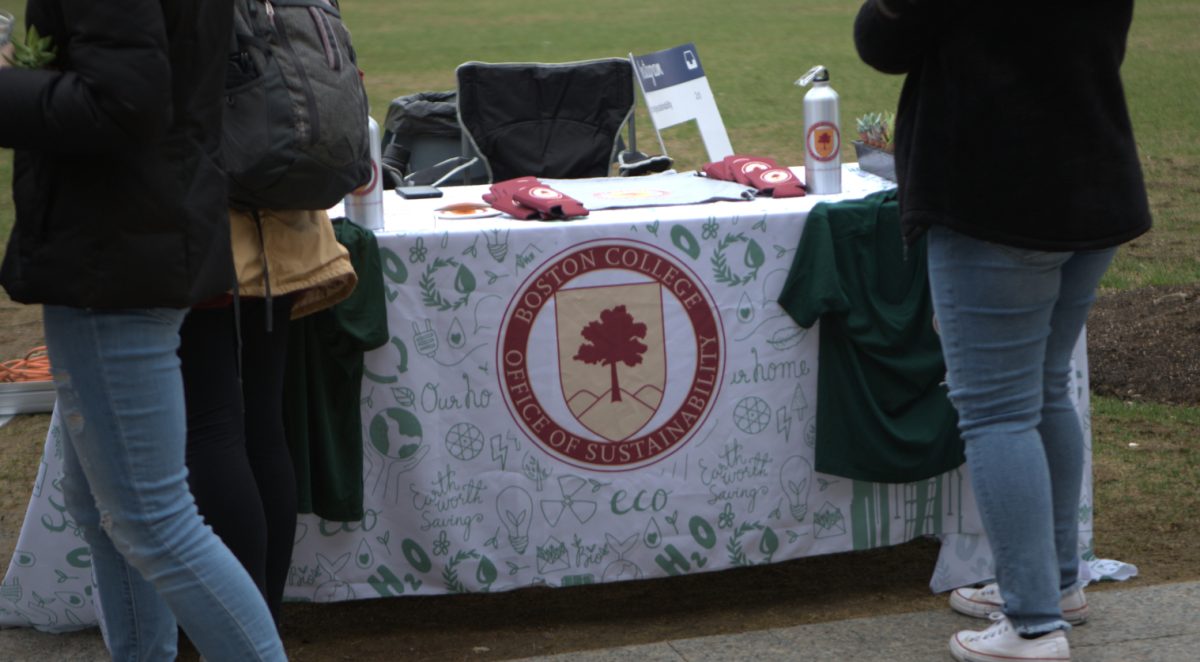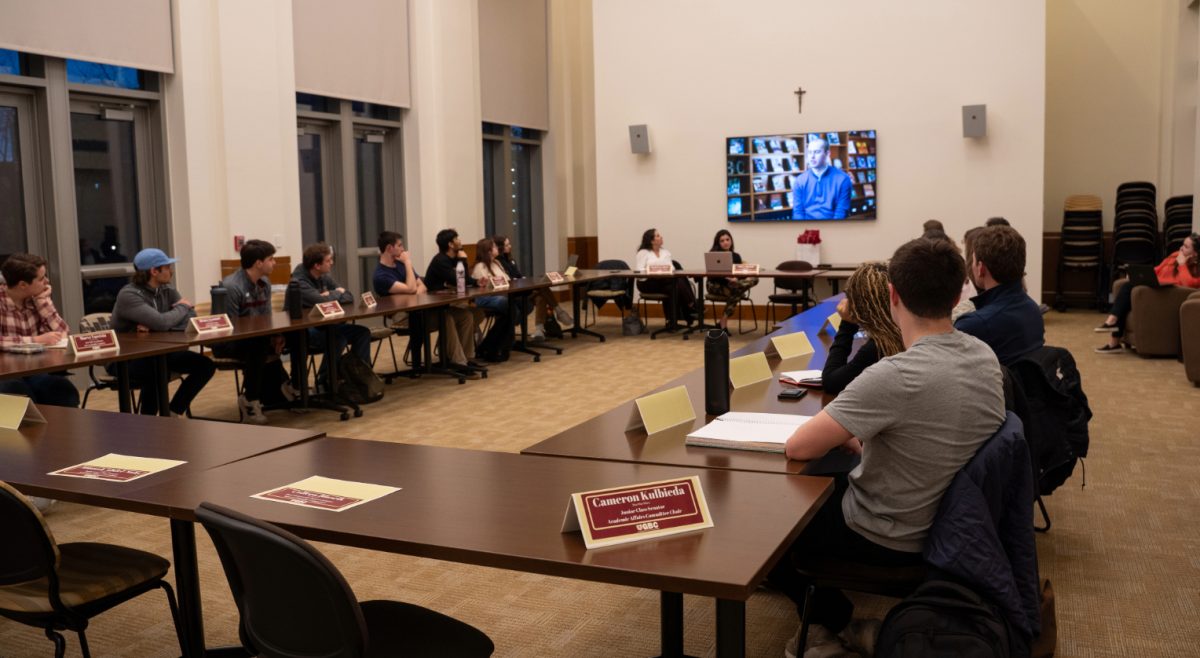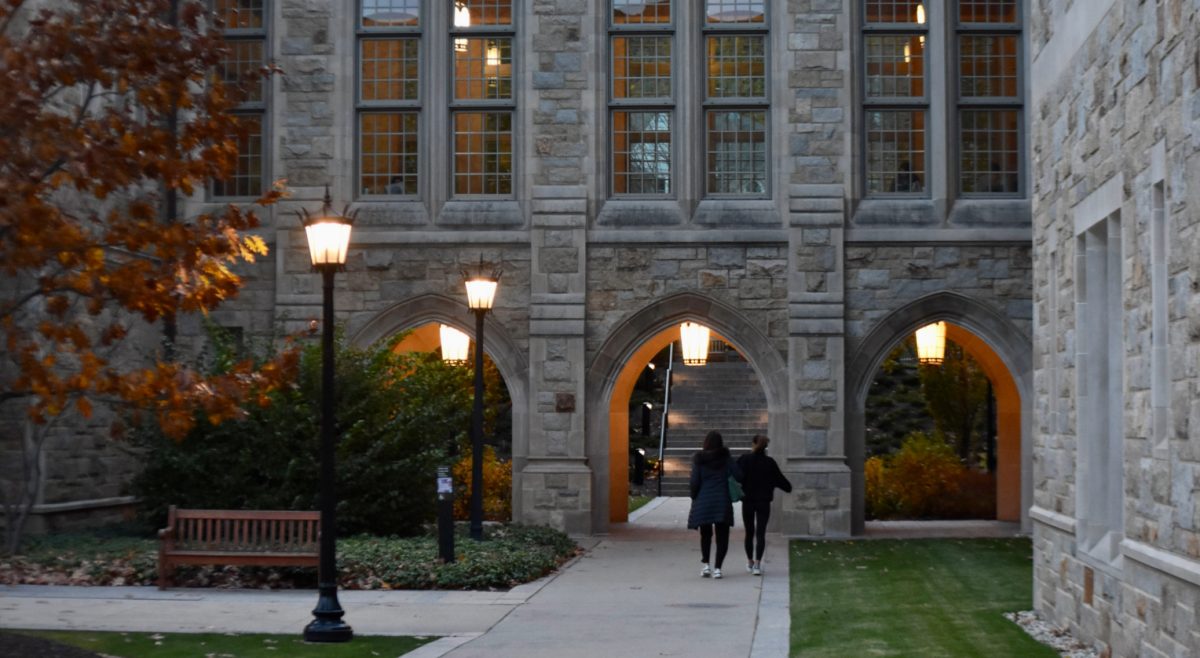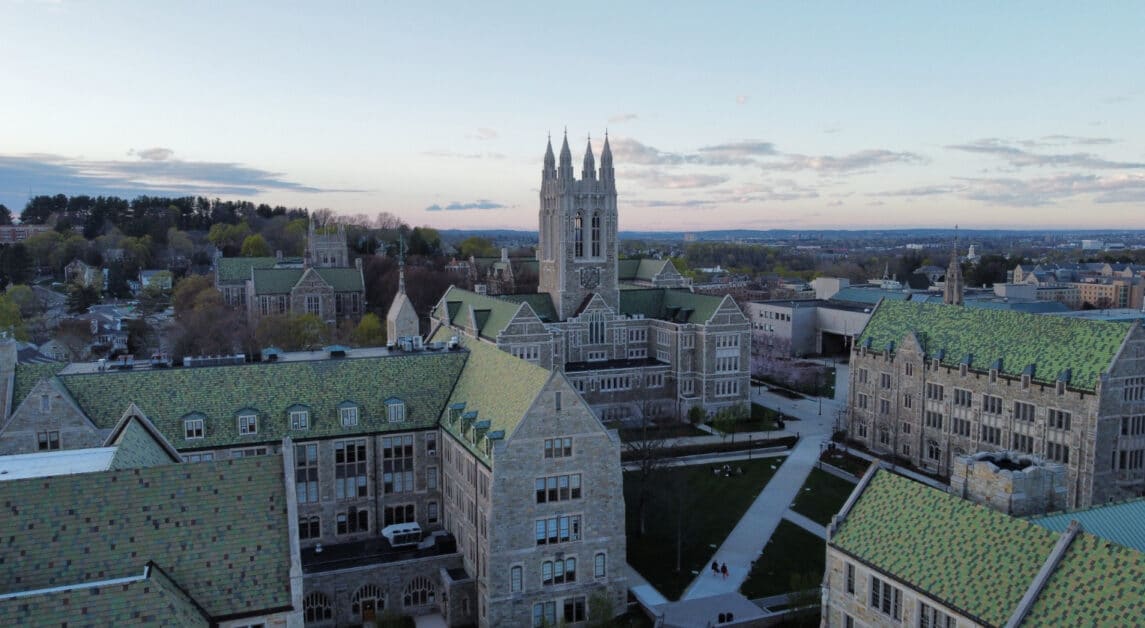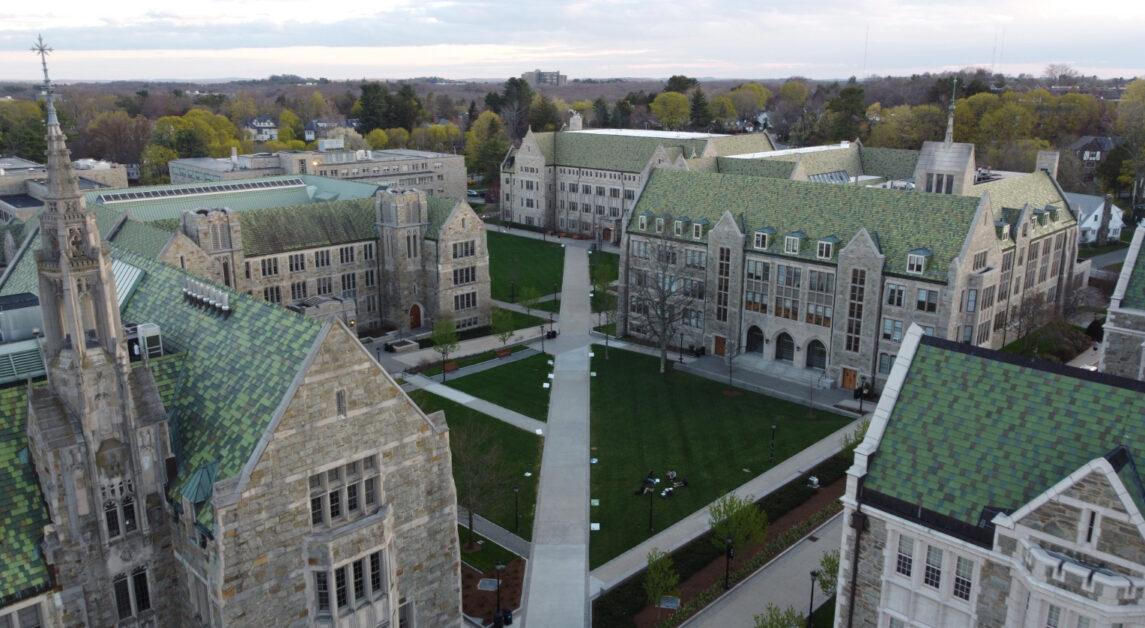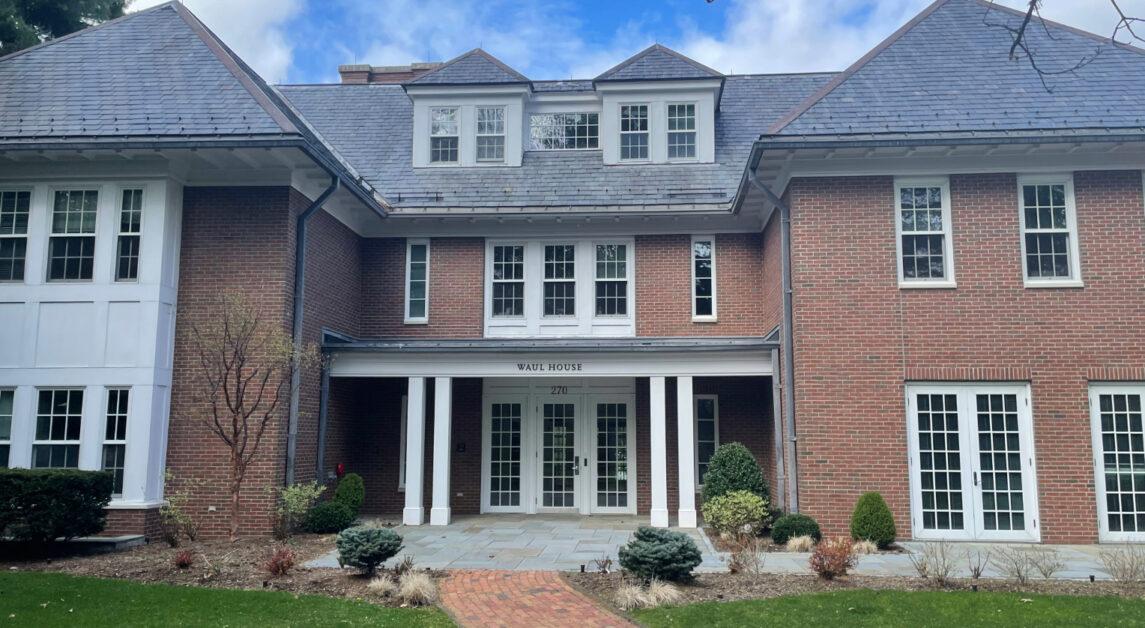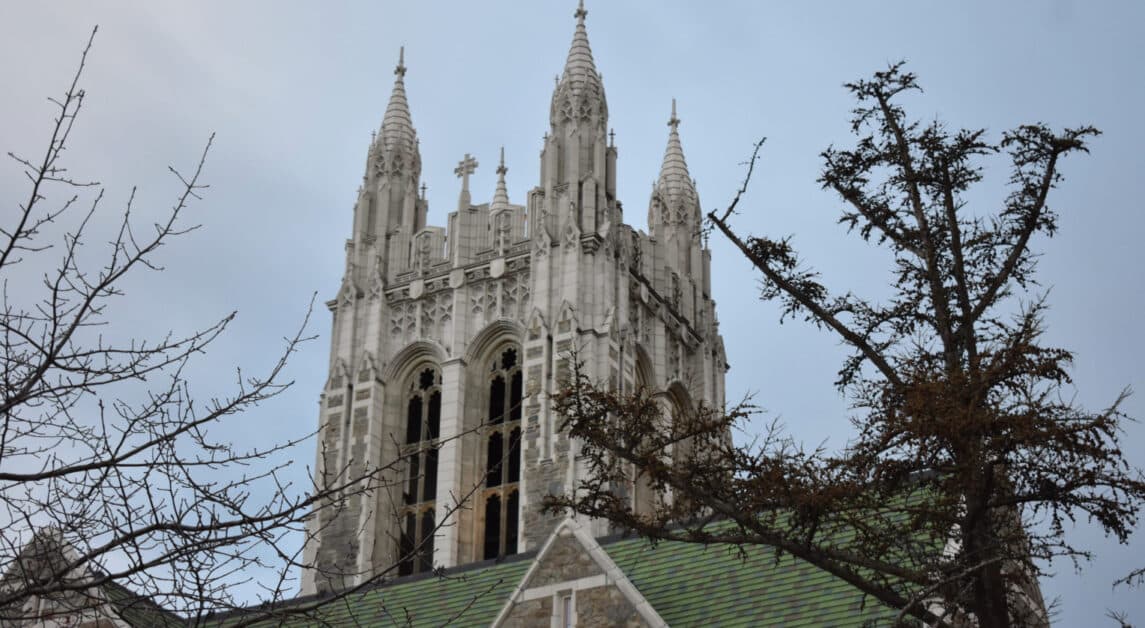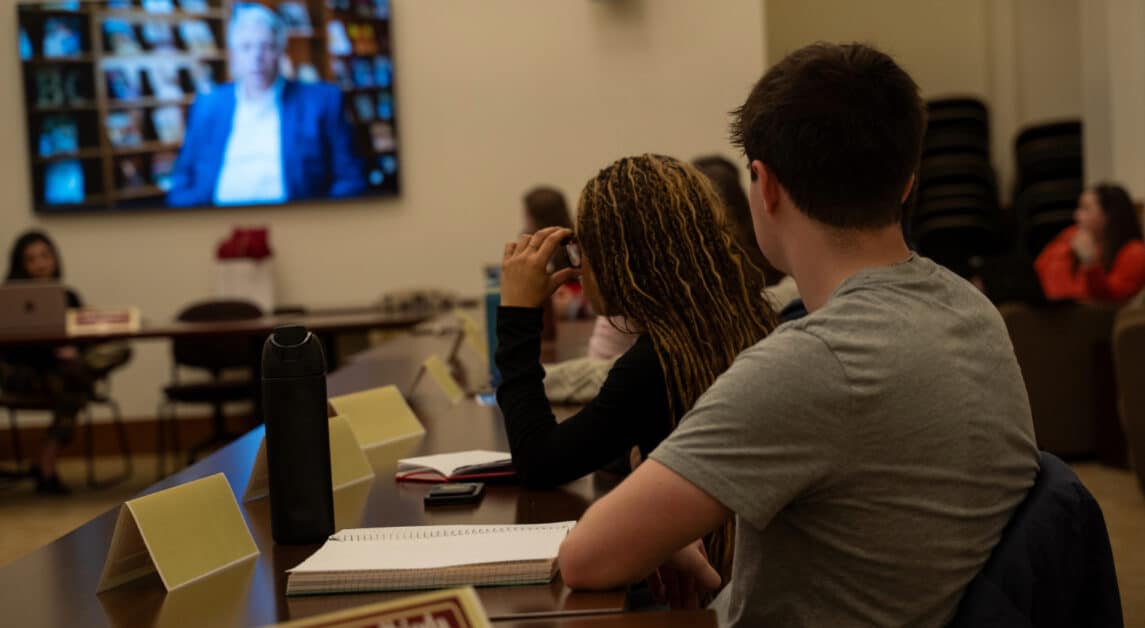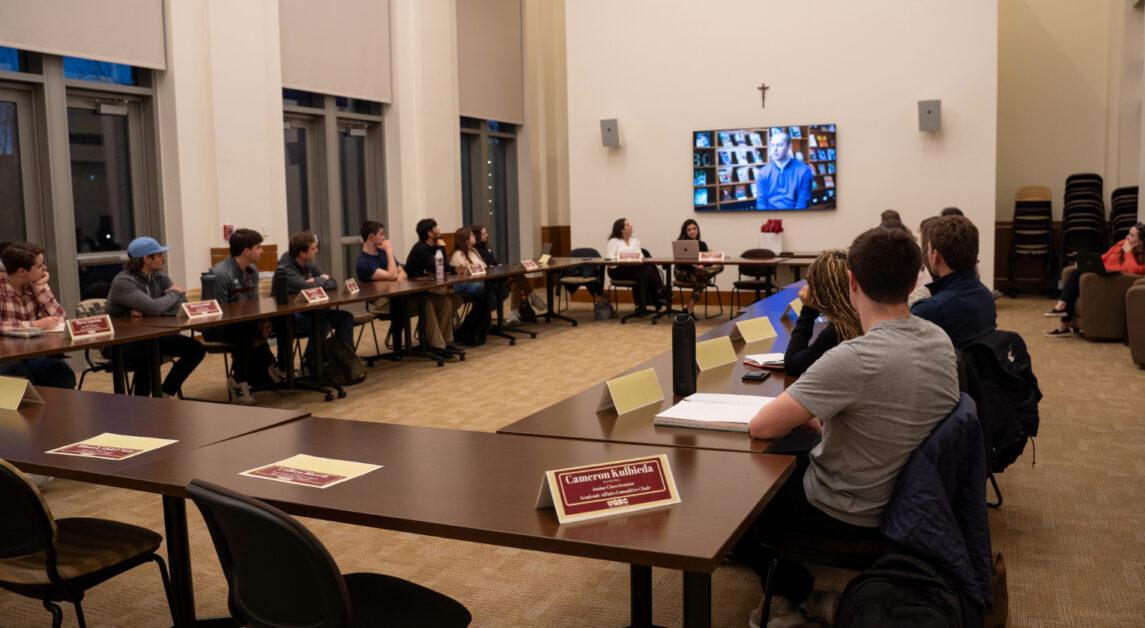The Boston College Symphony Orchestra enlivened a cold, wintery afternoon yesterday with an early 20th-century piece by Jean Sibelius.
Sponsored by the BC Music department, the Orchestra performed Symphony No. 2 in D major, Op. 43 as part of its winter concert.
Before conductor of the Symphony Orchestra John Finney introduced the piece, Marissa Baudino, LSOE ’14, announced upcoming concerts including one tonight at 8 p.m. in St. Ignatius Church. The performance will feature the world premiere of the “Mass of the Human Race” by assistant professor of music Ralf Yusuf Gawlick, sung by the eight-voice, Grammy-nominated Choir of Trinity Church Wall Street under the direction of Julian Wachner.
After the orchestra finished warming up, Finney introduced Sibelius as the best known composer to come out of Finland, before stating that the orchestra elected not to have written program notes so as not to give the audience preconceived notions about the piece.
Still, Finney did offer some brief thoughts on the piece, comparing it to an exquisite ballet.
“I’m going to give you a few preconceived notions just to keep in the back of your mind,” he said. “This is the kind of music that is sheer beauty of melody.”
He also discussed how Sibelius would have seen many beautiful winter days like yesterday while living in Finland.
“One of the things that Sibelius does is to introduce a melody in very small snippets so when he introduces a melody, you have that kind of deja vu of ‘Oh, I’ve heard that before,'” Finney said in in his introduction before having the orchestra play part of the piece as a preview to illustrate his point.
The first part of the symphony, Allegretto, featured many echoing and overlapping melodies and featured the string section of the orchestra heavily.
The second part, Tempo Andante, Ma Rubato began with a drum roll and then plucking of the violincello. This part also featured the wind section more and was more sober and dramatic than the first part.
“Occasionally, you’ll hear a melody presented without any adornment at all,” Finney said about the piece, referring more to this part.
It continued with low ebbing sounds, flourishes of the flute, a building of the bass and timpani drums, and an abrupt ending.
“Another thing Sibelius does is to overlap things so that there is one beautiful melody and another beautiful melody has already started,” Finney said.
The third part, Vivacissimo, began with high-pitched violins and was more ebullient than the second part, with pounding drums and a chill-inducing climax.
“There’s one beautiful melody with all the violins together with no other accompaniment at all, first played by the entire brass section and then again played by the entire wind section,” Finney said, referring to this part.
The fourth part, Allego Moderato, was magisterial, with whirring sounds toward the end and a final resounding climax. The hour-long concert ended with one minute of sustained applause.
Many students in attendance came to the concert as part of coursework.
“As a student taking intro to music, I enjoyed it as my first concert as it allowed me to apply what I’ve learned so far,” said Jude Poku, A&S ’17.

